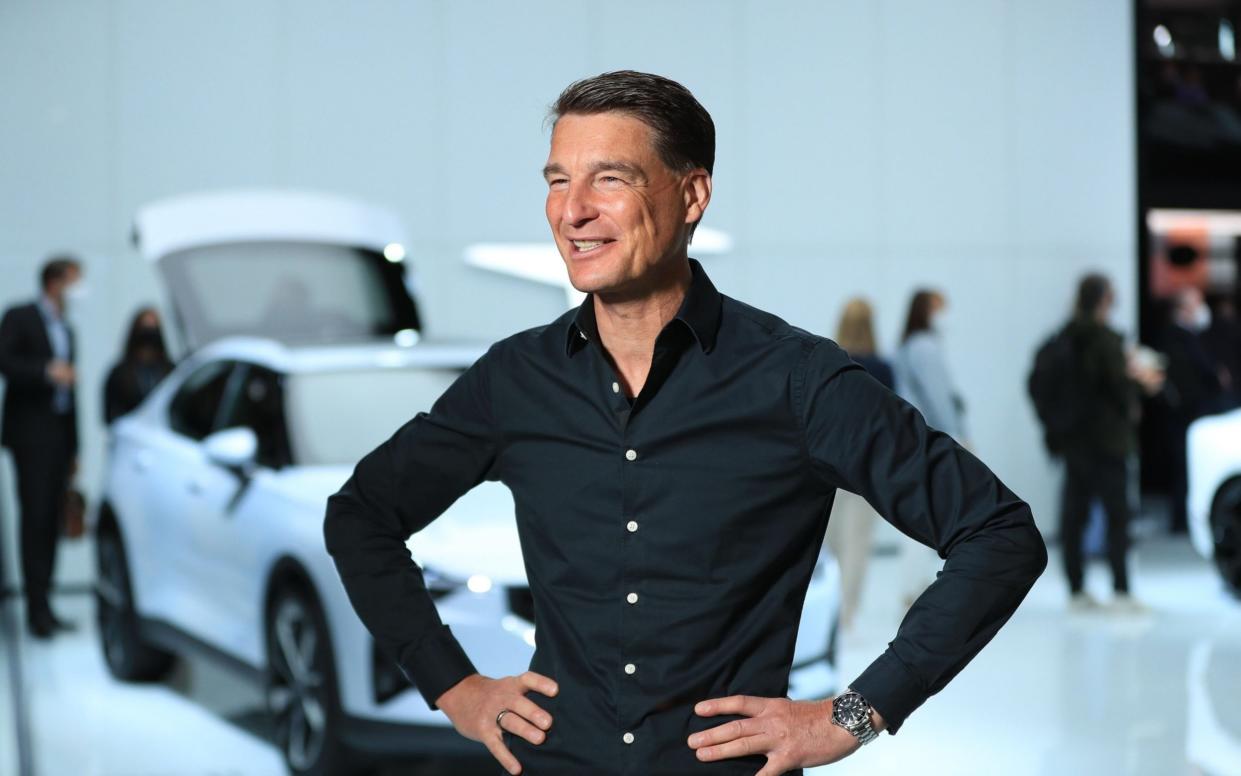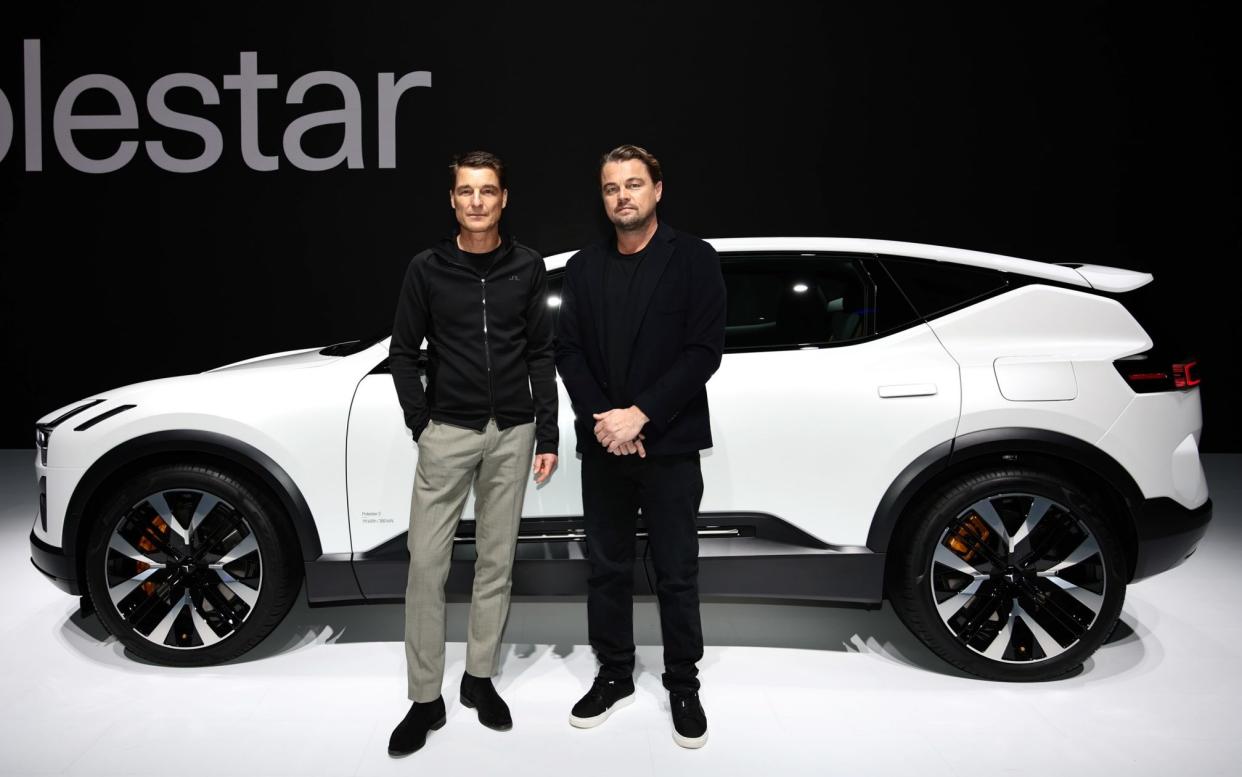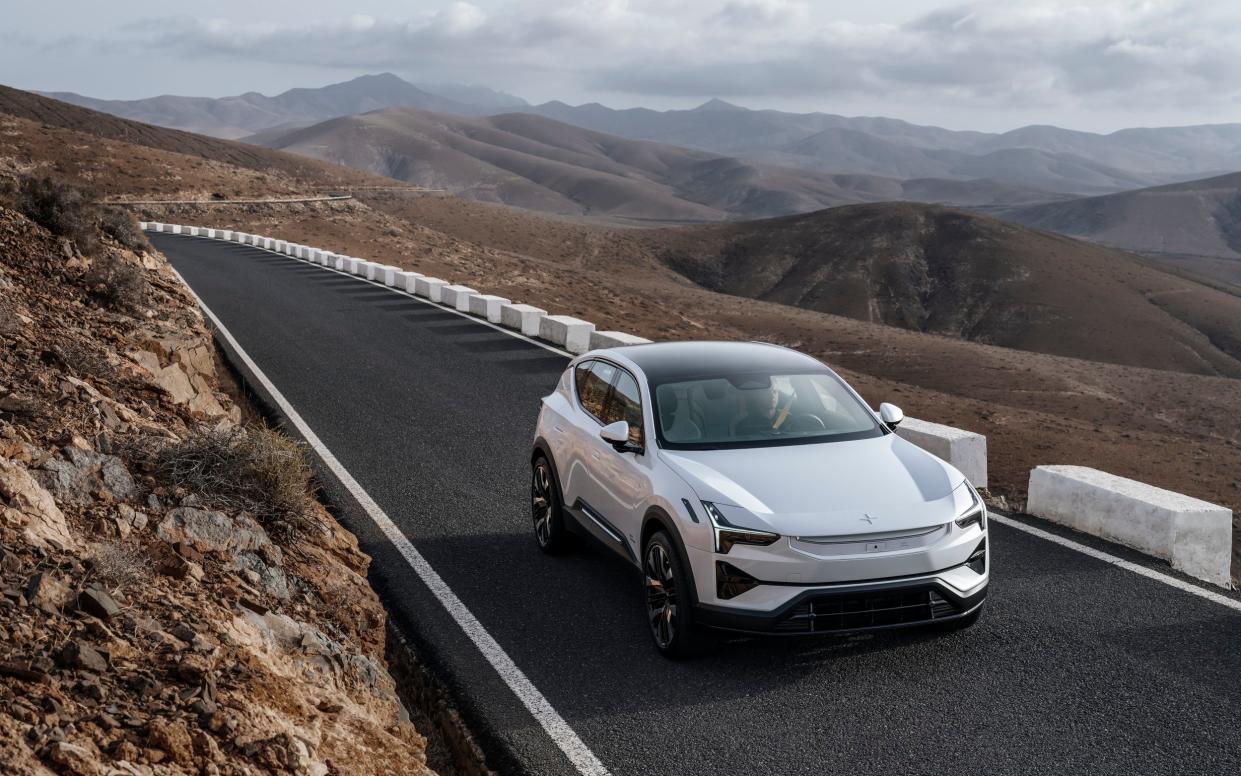Drivers ‘scared of change’, says electric car maker ditched by Volvo

The chief executive of European electric car maker Polestar has claimed drivers “scared of change” are to blame for the slowing uptake of electric vehicles (EVs).
Asked why consumer adoption of EVs appeared to be flattering, Thomas Ingenlath, chief executive of the company dubbed “Europe’s Tesla”, said: “To tell you the truth, I think that [it is about] being open for innovation and the future technology.
“I see far too many people hesitating with that and being scared of change. That is just not a good recipe for the future.”
However Mr Ingenlath claimed that rivals slowing their electrification plans were falling into a “trap”.
He said that manufacturers pumping the breaks on EV rollout plans will be left at a disadvantage given the complexities of launching new vehicles.
Mr Ingenlath told The Telegraph: “There’s an incredible threat and danger if you don’t embrace future innovation and believe in that technology – the electric drivetrains, the innovation in battery, the innovation in modern electronics and software.
“If you don’t participate in that and think you can wait, and customers are ready for it, it’s an incredible trap.”
Manufacturers including Mercedes, Ford and Aston Martin have warned that demand for electric models is not as strong as previously expected, with consumers still wary of high prices and unevenly spread charging infrastructure.
Many companies have either delayed or reduced their EV ambitions as a result, despite the fact government deadlines for axing combustion engines remain in both the UK and EU.
Mr Ingenlath said: “Of course, as a pure electric company, we are convinced electric propulsion is a technology which is superior.
“It’s not a question of being electric or being combustion engine: this is a question of who has that convincing, great product. I definitely think that is worth the battle and we will win this.”
He was speaking after his company secured a $1bn lifeline from banks after Volvo, Polestar’s former parent company, announced it was withdrawing financial support. It followed a succession of missed targets by the brand and a share price collapse.
Polestar originated as a racing team in the Scandinavian Touring Car Championship that used Volvo cars.
The brand name was later purchased by Volvo and then spun out to become a standalone electric marque in 2017, through a joint venture owned by Volvo and its Chinese parent, Geely.
Mr Ingenlath, a German who previously served as Volvo’s design chief, has been chief executive since then.

Some have called the Scandi EV company Europe’s answer to Tesla, no doubt partly because of Polestar’s sleek and futuristic-looking designs. Backers include Hollywood star Leonardo DiCaprio.
Polestar listed on the New York stock exchange in 2022 valued at about £11.5bn. However, since then the company has lost 60pc of its value and it has failed to hit key delivery targets.
The business lost $1bn and $1.3bn respectively in 2021 and 2022 and was $735m in the red following the first nine months of 2023, according to its latest numbers.
Before the stock market listing, Polestar promised annual deliveries of at least 155,000 vehicles by 2025. But the company downgraded its forecast for 2023 to just 60,000.
At the same time, the EV market is today suffering from something of a funk.
The UK consumer market actually shrank slightly last year, while on Friday new data from the Society of Motor Manufacturers and Traders (SMMT) showed that half of drivers now intend to wait until at least 2030 to go electric, underlining a growing sense of crisis.
The $1bn lending lifeline is therefore a crucial crutch for Polestar as it seeks to break even by 2025. However, the company has said it needs to raise $1.3bn overall to reach that milestone – meaning it will have to find another $350m at some point before then.
Polestar last week also announced a restructuring of its shareholding that will hand Chinese car giant Geely a greater share of the business. The company is already a significant shareholder and Polestar’s cars are actually made at Geely’s factories in China and then exported to Europe and the US.
That could cause problems in the coming years, amid a looming crackdown on Chinese-made EVs in both the US and Europe.
The European Union is investigating alleged subsidies handed to Chinese companies, while US President Joe Biden has warned that vehicles assembled in China pose a “national security risk” to American citizens. British authorities are also examining whether to launch an investigation.

Polestar has plans to get further production lines going in the US and South Korea this year and 2025 respectively, which may help it avoid any crackdown.
While some might take the Tesla comparison as a compliment, Mr Ingenlath seemed to bristle at it. The pair differ in “the market that we are going for”, he explained.
Elon Musk’s Tesla is targeting mainstream, middle-class consumers with its Model 3 sedan and Model Y SUV, which start at about £40,000 and £45,000 respectively. Polestar’s three current cars are aimed at a slightly wealthier clientele, ranging in price from £45,000 to £80,000.
Mr Ingenlath said: “We are not in the game to do the mass market and compete with the traditional [car makers] in that field.”
As a brand, Polestar has staked its reputation on design, quality and sustainability, epitomised by a “moonshot” plan to develop a truly zero-emissions vehicle – where even the supply chain will be carbon-free – by 2030.
This focus on more wealthy drivers is helping Polestar weather a downturn in broader EV sales, Mr Ingenlath argued.
“Our brand is going into the segment where premium performance cars with an incredibly good design, incredibly good connectivity, with incredibly good handling on the road attract people who love driving cars and are open to innovation and the greatest modern product.
“And that I think is what is convincing customers, and will be convincing to customers in the future.”
In another departure from Tesla, Polestar’s first car was also not a pure electric. The Polestar 1, which is now out of production, was a plug-in hybrid using technology developed largely by Volvo.
Since then the company has launched the all-electric Polestar 2, as well as the Polestar 3 SUV and the Polestar 4 SUV coupe, which went on sale in Europe in late January. A fifth car, the Polestar 5 grand tourer, is scheduled to launch later this year.
On the question of customer demand, Mr Ingenlath added: “I cannot confirm that we don’t see demand for Polestar 3 or Polestar 4, when I see how much people are waiting for us to have these cars now in production.”
Mr Ingenlath argued that the retreat of other, less committed brands from the electric space will ultimately benefit his company.
He said: “It’s an incredible opportunity for Polestar that, in that sector of premium performance cars, there is indeed not that much competition coming.
“I definitely think that is where you have customers who very much embrace the innovation and the greatness of the electric drivetrain, especially in this very high-end premium, exclusive sector.”
Perhaps the chief executive will be proved right about his rivals. Alternatively, it may be Polestar that is now driving into a trap.


